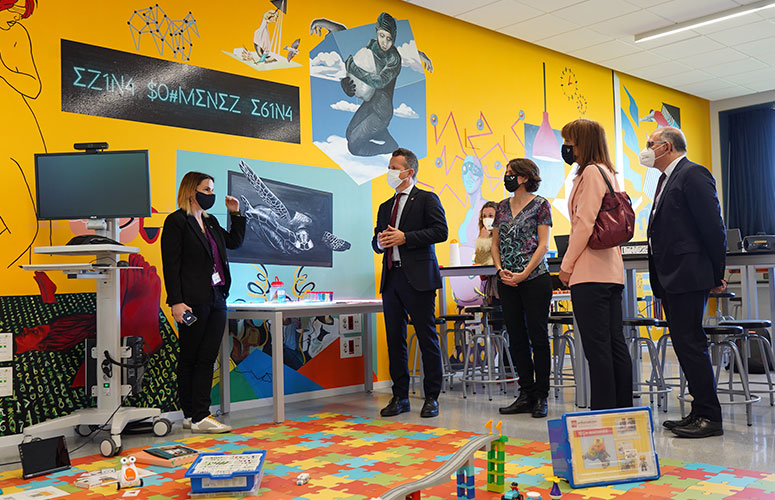The Faculty of Education of the UPV inaugurates MakerLab
2021/04/27 STEAM-Hezkuntza (Elhuyar Zientzia)
The first laboratory of a school of education at the state level will work the STEAM disciplines with the students of Early Childhood and Primary Education.
 400
400
In the Leioa-Erandio area of the Campus of Bizkaia of the University of the Basque Country, the BHFM French Lab (BHF, Faculty of Education of Bilbao) was inaugurated. It is a space to promote the teaching-learning process in the areas of Early Childhood Education and Primary Education, with special attention to the disciplines known as STEAM (Science, Technology, Ingeniering, Arts, Mathematics).
In the opening ceremony, the Rector of the University, Eva Ferreira, said that the objective of MakerLab is to train students in their professional work, in order to promote from an early age the scientific-technological training of children. The young woman added that she will also help break the current gender gap in these academic disciplines.
On the other hand, Councillor Jokin Bildarratz stressed that this project is part of the ‘STEAM Euskadi Strategy’ of the Basque Government. STEAM content, science, mathematics, technologies and the arts, understood as art as a humanistic concept, have taken great importance and our society is based on this knowledge. He stressed the importance of students being able to interact with this knowledge.
The term ‘Education Maker’ was born with the incorporation of the maker movement into the educational world. The Maker laboratory is composed of learning spaces and materials that will allow activities and propose learning sequences with future teachers of Early and Primary Education. To do this, learning will be built from an approach based on the creation of objects or projects. In this sense, students will be able to analyze the didactic potential of this type of space to develop learning and train students from 2 to 12 years.
To carry out this approach, the BHFM lab has the following materials:
- Educational robots: they are robots oriented to early stages (2-7 years) that in most cases will approach basic concepts of programming through manipulation and play (Beeboots, Matalab, Aysol...).
- Material for the construction and creation of objects: they are construction kits in which students must create a robotic object to solve a challenge posed. In this case we propose tasks related to everyday life in which the construction and programming of robots can give solution (7-12 years).
- Educational programming material: the laboratory has material that allows creating objects that can respond to a practical need. Arduinos, raspberry pi's, makey-makey, etc. constitute the fundamental basis from which the corresponding materials are generated.
- Electronics components and circuit building or small technologically enriched objects: they will be used to create works of art, musical instruments, etc.
- 3D glasses, tablets, 3D printers, laser cutting: the goal is to use 3D educational software and analyze its potentiality in the classroom, create objects through software design, etc.
In addition, the BHFM lab has a mural created ad hoc. Specifically, it is a large painting with visual references on the history of art and its contributions to science and technology. It is an open and contemporary work of art, as well as the STEAM concept, which looks to the future from a gender perspective, collecting references to these disciplines and the women who have participated in them.




